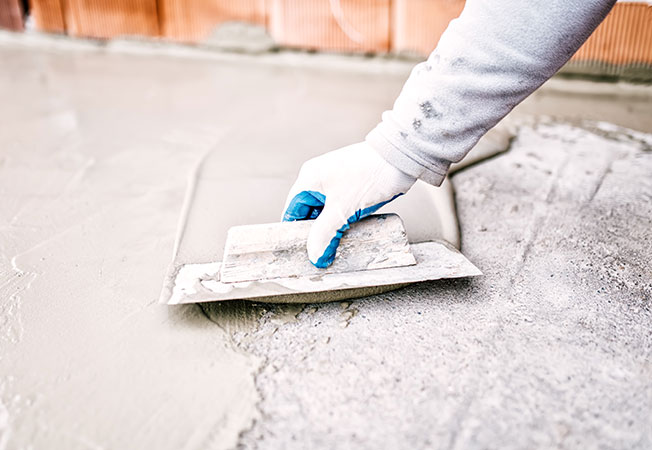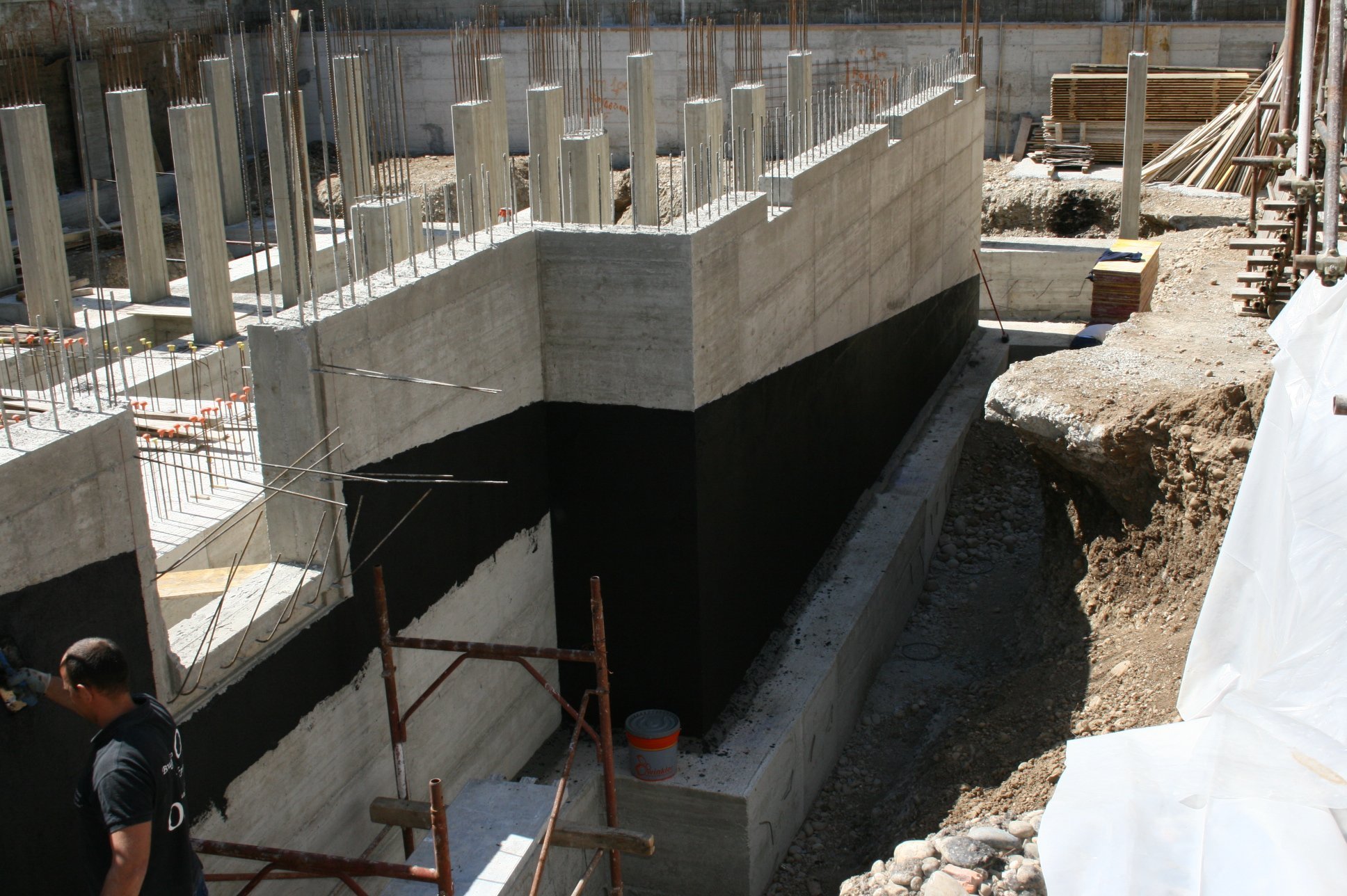Top 10 Reasons to Consider Basement waterproofing Omaha for a Dry Living Space
Sorts of Waterproofing: Exploring the Various Techniques and Their Applications
Waterproofing is an essential element of building and construction and upkeep. It safeguards structures from the damaging effects of water damage. There are several techniques offered, each with its unique applications and advantages. From membrane layer systems to cementitious remedies, understanding these alternatives is vital for reliable implementation. The selection of waterproofing method can greatly influence longevity and longevity. Discovering these various strategies discloses their unique advantages and possible challenges, prompting further consideration of ideal services.
Membrane Layer Waterproofing Solutions
Membrane layer waterproofing systems work as a vital obstacle versus water invasion in various structures. These systems commonly include thin sheets made from materials like rubber, thermoplastic, or asphalt, which are related to surface areas to prevent moisture penetration. They can be installed over or listed below grade and are specifically efficient in locations prone to high water direct exposure, such as cellars, roof coverings, and foundations.The installation procedure entails cleaning up the substratum, using adhesives or primers, and specifically fitting the membrane layer to assure total insurance coverage. Membrane systems can be either fully stuck, mechanically connected, or laid loose, depending upon the specific needs of the task. They provide durability and versatility, accommodating architectural motions without compromising their waterproofing capabilities. These systems can be enhanced with added layers for enhanced protection. Eventually, membrane layer waterproofing systems are necessary for protecting frameworks versus water damage and preserving long-term honesty.
Liquid-Applied Waterproofing Coatings
Liquid-applied waterproofing layers supply a functional option for shielding surfaces from water seepage - Water Solutions. These layers contain liquid products that, when applied, develop a seamless, flexible membrane layer. Their flexibility enables application on various substrates, including concrete, metal, and timber. The coverings can be utilized in varied settings, from household to industrial setups, making them ideal for roofings, foundations, and below-grade structures.One significant benefit of liquid-applied layers is their capability to comply with irregular forms and permeate fractures, developing a robust barrier versus moisture. They typically display superb attachment residential properties and resistance to UV radiation, guaranteeing long life and resilience. Furthermore, the application process is generally uncomplicated, allowing for quick installation and decreased labor prices. This method also minimizes the threat of water merging, as the continuous layer efficiently directs water away from at risk locations. Generally, liquid-applied waterproofing finishings are an effective selection for comprehensive water defense
Cementitious Waterproofing Solutions

Cementitious waterproofing remedies offer a robust option for structures requiring dependable dampness defense. These systems primarily use a mix of cement, sand, and chemical additives to create a water resistant obstacle. They are frequently used to surface areas such as concrete wall surfaces, structures, and floors, providing a resilient, resilient protection against water intrusion.One of the vital benefits of cementitious waterproofing is its convenience of application; it can be applied visit our website making use of a brush, roller, or spray, making it ideal for various project dimensions. In addition, this approach works with lots of surfaces and can often be used together with other waterproofing techniques.Cementitious solutions are particularly reliable in environments where water exposure is a worry, such as cellars or below-grade frameworks. Their excellent adhesion properties guarantee that they bond well with substrates, supplying a solid and impermeable layer versus moisture penetration.
Bentonite Waterproofing
Bentonite waterproofing is an extremely efficient approach that uses salt bentonite clay to create a natural barrier versus water. This method manipulates the distinct residential properties of bentonite, which broadens upon call with water, sealing any kind of potential leakages and stopping moisture seepage. It is frequently utilized in various applications, consisting of foundation walls, tunnels, and maintaining wall surfaces, where water resistance is essential.Bentonite can be used in a number of forms, such as panels or coverings, offering flexibility in installment. Its capability to self-seal makes it an appealing option for locations click based on shifting dirt or ever-changing water levels. In addition, bentonite waterproofing is environmentally pleasant, as it is an all-natural material that does not present harmful chemicals into the environments.
Water Drainage and External Waterproofing Equipments
Effective waterproofing commonly includes a mix of strategies, including water drainage and exterior systems. Water drainage systems, such as French drains and sump pumps, are designed to reroute water far from structures, lowering hydrostatic stress versus foundations. These systems are vital in preventing water build-up that can lead to architectural damage and mold and mildew growth.External waterproofing, on the various other hand, involves applying protective barriers to the structure's outside. Strategies such as the installment of waterproof membrane layers, finishes, or sealers can assist avoid water seepage. This technique not only safeguards the foundation yet likewise improves the overall longevity of the structure.Together, drain and external waterproofing systems form a thorough service to handle water efficiently. By applying these methods, homeowner can protect their financial investments versus the destructive results of moisture, guaranteeing long-lasting stability and safety and security for their buildings.
Regularly Asked Concerns
How Do I Pick the Right Waterproofing Technique for My Task?
Selecting the ideal waterproofing approach depends upon aspects such as task kind, ecological problems, budget plan, and desired durability. Examining these facets enables informed choices customized to specific requirements and requirements.

Can Waterproofing Be Applied in Winter Issues?
Waterproofing can be applied in chilly climate problems, but it requires particular materials and strategies. Cold temperature levels might impact healing times and adhesion, demanding mindful option of items created for low-temperature application.
What Are the Common Indicators of Waterproofing Failure?
Typical indications of waterproofing failing consist of noticeable water spots, peeling off paint, moist smells, mold growth, and cracks in wall surfaces or structures. Basement waterproofing Omaha. These indicators suggest that wetness is passing through the barrier, endangering its efficiency
How Much Time Does Waterproofing Last Prior To Requiring Upkeep?
The longevity of waterproofing differs, typically lasting between 5 to one decade. Elements such as material top quality, ecological conditions, and maintenance techniques affect its resilience, necessitating periodic assessments to assure effective defense versus water visit site intrusion.
Exist Eco-Friendly Waterproofing Options Available?
The question of green waterproofing choices exposes an expanding passion in sustainable products (Sump pump discharge drainage Omaha). Numerous natural compounds, such as plant-based sealants and recycled items, use reliable options while lessening environmental impact, interesting ecologically mindful customers